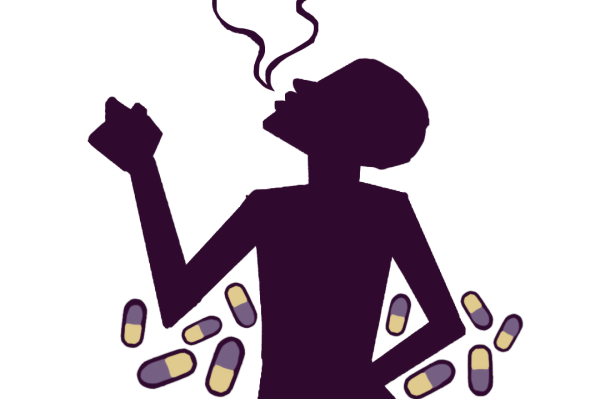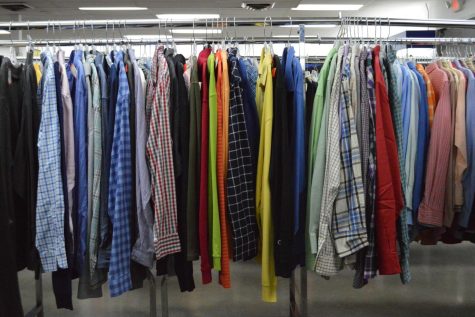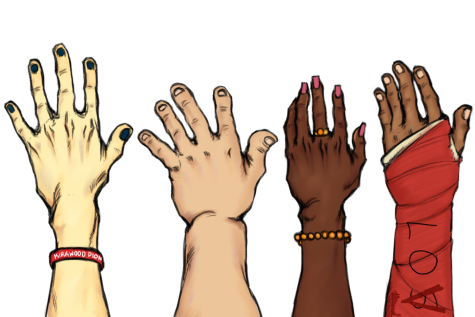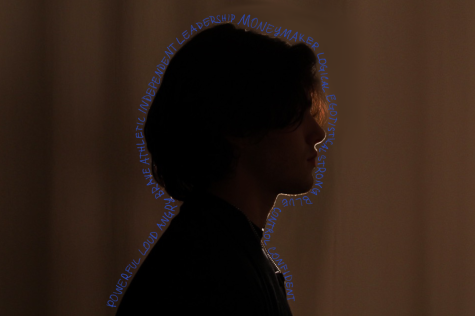In-depth: Pink is for girls
March 30, 2022
Girls like pink. Girls should play with dolls. Girls are not interested in STEM. Girls are emotional. Girls should be thin and beautiful.
All of these descriptions are female stereotypes, according to the Gender Equality Law Center. Sasha Boyd, sophomore, said she sees these stereotypes in her life everyday.
“[People] usually think that women and girls aren’t smart, especially in STEM and science,” Boyd said. “[People think women are] physically weaker and that they’re always looking for guys’ attention. Many women feel like they need to appeal to the male gaze [because of that stereotype].”
A New York Times survey found that three-quarters of girls 14-19 said they felt perceived as a sexual object. Ellah Brunstrom, junior, said she felt sexualized her freshman year because she wore more revealing clothes.
Mentally, [being sexualized] can really stick with someone, because you’re going to feel like it’s your fault.
— Ellah Brunstrom
“When [women] wear crop tops, shorts or skirts they’re perceived as wanting attention,” Brunstrom said. “When a girl’s cleavage is showing, guys look at it. Mentally, [being sexualized] can really stick with someone, because you’re going to feel like it’s your fault.”
According to the National Sexual Violence Resource Center (NSVRC), 56% of teenage girls experience sexual harassment. Sexual harassment includes anything from physical touch to sexual rumors about someone. Brunstrom said she sees this often in the form of “slut-shaming.” She said people consider women “hoes” if they’ve slept with one person, or prudes if they haven’t.
“Freshman year, people thought I was a ‘hoe’ because I only had guy friends,” Brunstrom said. “Due to previous experiences, I didn’t trust many girls. So a lot of people thought I was just passed around the friend group.”
Sexualization from the outside, like rumors about a girl’s sex life based on what she wears or does, can undermine her confidence and comfort with her body, according to the American Psychological Association (APA). This can lead to emotional and self-image problems, such as shame and anxiety. Hannah Moore, senior, said sexualization and female stereotypes put pressure on women every day to look a certain way.
“[Gender norms] can affect women pretty heavily,” Moore said. “That’s why a lot of women take so long to get ready, because of the way people look at them and categorize them. That can be unhealthy for women’s mental health.”
Another common stereotype is that lesbians have a more “masculine aura” or enjoy things that are not stereotypically feminine according to a study done by the National Institute of Health (NIH). Since Moore enjoys sports and has a more muscular build (traits that are considered masculine), people don’t see her as fitting into the “norm” of what a straight woman should be.
We as a society have to break [stereotypes]. [It shouldn’t] be normal for us to just categorize people right off the bat, based on what they do or what they like.
— Hannah Moore
“I have been asked if I’m bisexual or not,” Moore said. “It’s never bothered me but it’s funny because I identify as a straight woman. Because I like one thing, people think of me a certain way.”
Whether it’s assuming a woman’s sexuality, that women want male attention, or assuming their favorite color is pink, gender norms are proven to disproportionately affect girls according to the Save the Children Federation. As Shirley Chisholm, the first black congresswoman said, “The emotional, sexual and psychological stereotyping of females begins when the doctor says ‘It’s a girl.’”
“We as a society have to break [stereotypes],” Moore said. “[It shouldn’t] be normal for us to just categorize people right off the bat, based on what they do or what they like.”












![“[Fashion is] a means to express myself,” Ezra Birman, senior, said. “I can’t imagine a world where I didn’t dress like this.”
Art by Ally Hudson](https://www.thekirkwoodcall.com/wp-content/uploads/2022/03/ezrapolaroid-e1646944084982-475x318.png)